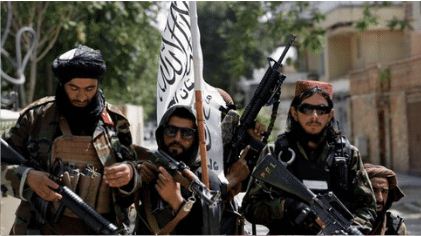The danger associated with raising a monster is that you never know when it will start attacking you at any moment. You know, the whole idea behind Frankenstein’s monster. It seems that Pakistan has created Frankenstein’s monster for itself, which can give the South Asian nation a lot of pain. We are talking about the Taliban, which is a product of Pakistan’s terror laboratories but is turning into a serious threat for Islamabad now.
Taliban- a creation of Pakistan:
The Taliban has been created and recreated by Pakistan. Throughout the 1990s, the Pakistan Army and the Inter-services Intelligence (ISI) were instrumental in creating and training the Taliban. When the Taliban overran Afghanistan in 1996, Pakistan was only one of three nations to recognise the Taliban regime.
Even when the US was fighting a war against the Taliban, Pakistan used to dishonestly misappropriate American aid and use it for empowering the Taliban itself. For the past twenty years or so, Pakistan was nurturing the Taliban in the hope that as soon as the US exits Afghanistan, it would use the extremist Sunni group to control Afghanistan.
In fact, as soon as the US exited Afghanistan, Pakistan did push for a Taliban regime in the wartorn country with all its might. For this purpose, Pakistan placed its bet on the Haqqani Network.
Pakistan backs the Haqqani Network:
There are two broad factions in the Taliban- the Mullah Baradar faction and the Haqqani Network. Of the two, the Haqqanis enjoys Pakistan’s clear patronage. In fact, Haqqanis actually take their name from the Darul Uloom Haqqania madrassa near Pakistan’s capital city of Islamabad.
The Haqqanis are very close to the Pakistani security establishment and the Inter-services Intelligence, known as the ISI, which serves as Pakistan’s external intelligence agency. The Haqqani Network derives all its material and moral support from the Pakistan Army and the ISI. Presently, Mullah Baradar and Haqqani network leader Khalil-ul-Rahman Haqqani are engaged in a tug-of-war to control the Taliban.
However, ISI chief Faiz Hamid has put all his weight behind the Haqqanis in a bid to augment Pakistan’s influence in Afghanistan. Pakistan’s clear support to the Haqqanis has put Baradar and Taliban’s spiritual leader Haibatullah Akhundzada on the backfoot. In fact, The Spectator reported that Akhundzada’s whereabouts are not known whereas Baradar too seems to have been overpowered politically by the Haqqanis.
Meanwhile, Pakistan has tacitly projected Mullah Baradar as a moderate leader even though he is a hard-core terrorist. By doing this, Islamabad has successfully persuaded the radicals to abandon Baradar and rally behind Haqqani.
How Pakistan ended up creating a Frankenstein’s monster:
Islamabad wanted to control Afghanistan in order to use it as a breeding ground for radicals and terror-making laboratories. However, it forgot that Afghanistan remains a Pashtun-majority country. The Taliban too remains a Pashtun first organisation and considers the Pashtun brotherhood more important than the Islamist fraternity with Pakistan.
Pakistan itself has a strong Pashtun population in the erstwhile North-West Frontier Province (NWFP), which today encompasses Pakistani provinces like Khyber Pakhtunkhwa. A group called Tehreek-e-Taliban Pakistan (TTP) is hyperactive in this part of Pakistan. The TTP controls the Pashtun area in Pakistan and wants to establish a separate Pashtun State following the Shariah law. This effectively translates into severing the Pashtun-majority territory of Pakistan.
Now, the problem for Pakistan is that while it supports the Taliban in Afghanistan, the TTP is dead against Pakistan and yet the Afghan Taliban supports TTP because of sheer ideological semblance.
Rising Pashtun nationalism in Afghanistan:
The Pashtun nationalism in the Taliban is leading to a revival of anti-Pakistan revisionism in Afghanistan. The Taliban doesn’t recognise the Durand line, and there is a long-pending boundary dispute between Islamabad and Kabul.
Throughout the 1950s and then in the 1970s, then Afghan President Daoud Khan pursued a “Pashtunistan” strategy whereby he wanted to combine the Pashtun areas scattered across Afghanistan and Pakistan to form a new State that would comprise both Afghanistan and the Pashtun belt.
We know that the Taliban also follows the “Pashtunistan” strategy due to several reasons. Pro-Taliban leader Maulana Abdul Aziz, for instance, called for an “Islamic Revolution” against the Pakistani State. The rabble-rouser bluntly said, “It (Taliban’s resurgence) will definitely have a positive effect on our struggle to establish Islamic rule in Pakistan, but our success is in the hands of God.”
The Afghan Taliban is itself at loggerheads with Pakistan. Recently, the extremist Sunni group took down Pakistan’s flag from a truck carrying aid supplies into Afghanistan and tore it apart.
The Taliban has also said that it won’t allow any foreign power, including Pakistan, to interfere in its internal matters. The message is loud and clear- Pakistan doesn’t have a role to play in Afghanistan any longer. Finally, there were also some unconfirmed reports of Mullah Baradar supporters attacking Pakistan Army soldiers on the Pakistan-Afghanistan border.
The Taliban has clearly turned hostile towards Pakistan and this is bound to mount a lot of trouble for the terrorist nation.
